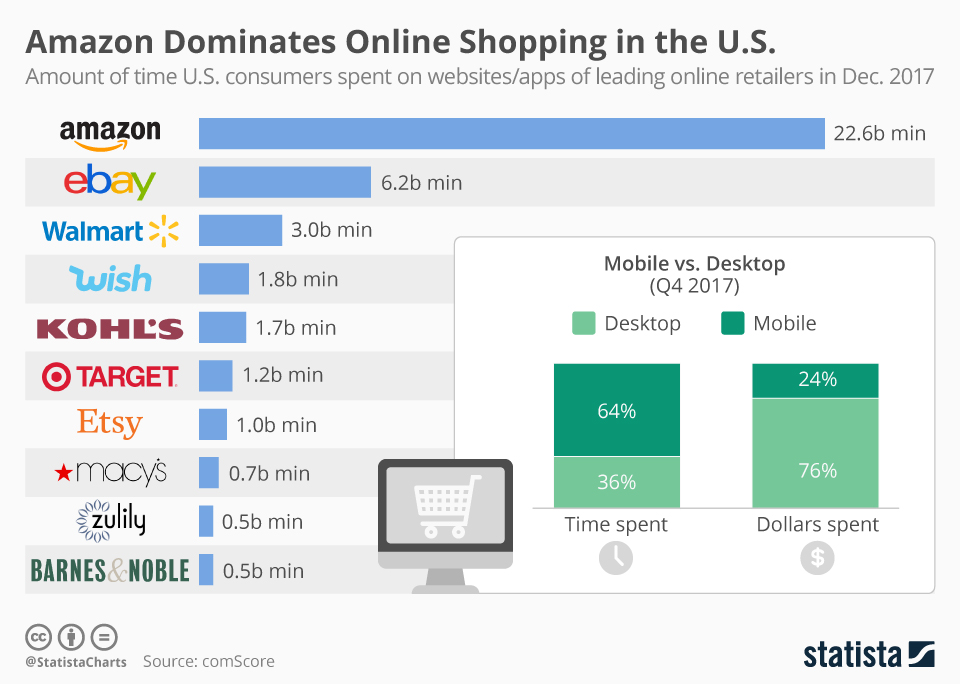According to a recent comScore report, e-commerce sales in the United States amounted to a record $131 billion in the fourth quarter of 2017, of which $32 billion were spent on mobile devices. Unsurprisingly Amazon is the biggest player in the market with nearly 200 million unique visitors (across all platforms) in December alone. While other big online retailers such as Walmart (127 million visitors), eBay (113 million) and Target (83 million) trail Amazon by a significant margin in terms of visitors, it’s another metric where Amazon’s utter dominance really comes to light.
As the chart below illustrates, Americans spent a total of 22.6 billion minutes on Amazon’s shopping platforms in December 2017, more than triple the amount of time people spent on second-placed eBay’s websites or apps. Interestingly, there is still a large gap between time spent and dollars spent on mobile vs. desktop devices: while Americans spent nearly two thirds of their online shopping time on smartphones or tablets in Q4 2017, more than 75 percent of e-commerce dollars were spent on desktop devices. This indicates that many people browse/research products on their mobile devices, but prefer the convenience of a larger screen and keyboard to complete the checkout process.
For online retailers, this implies that there is still a lot of potential in mobile commerce: while m-commerce accounted for a record 24 percent of total e-commerce sales in Q4 2017, it could account for much more than that in the future if the checkout process is made easy and seamless enough to encourage mobile shoppers to hit the buy button more often.
Amazon Dominates Online Shopping in the U.S.
E-Commerce

Description
This chart ranks online retailers in the United States by the amount of time consumers spent on their respective websites/apps in December 2017.



















